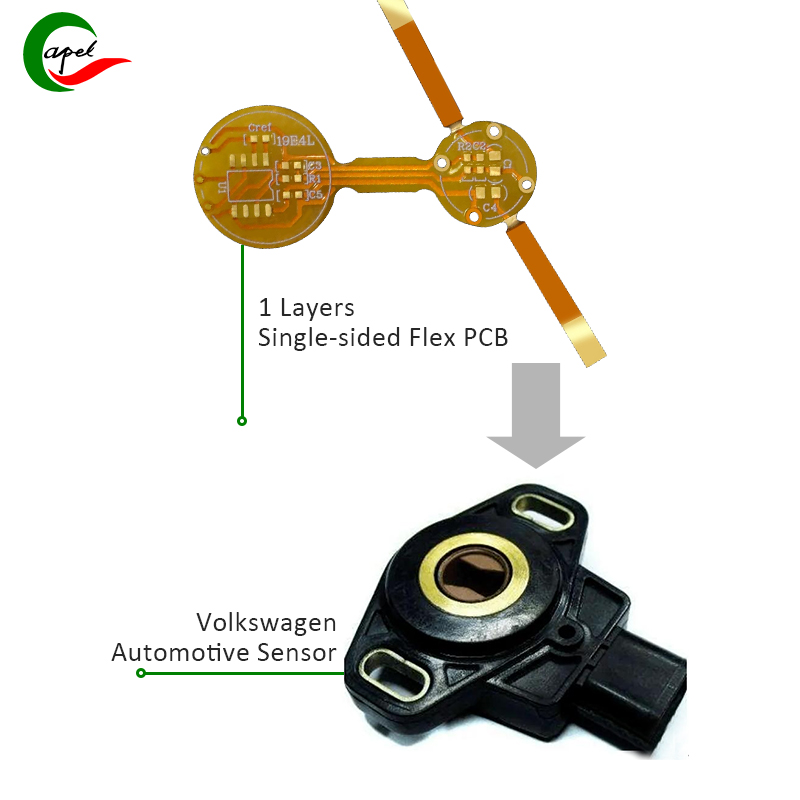Introduce:
With the emergence of wireless sensor networks (WSNs), the demand for efficient and compact circuits continues to increase. The development of rigid-flex PCBs was a major breakthrough in the electronics industry, allowing the creation of flexible circuit boards that can be integrated with rigid parts. In this blog post, we’ll take a closer look at whether it’s possible to prototype rigid-flex PCBs for wireless sensor networks, and explore the benefits and challenges associated with this innovative technology.
1. What is rigid-flex board?
Rigid-flex PCBs are hybrid structures composed of flexible and rigid components. These boards are constructed from a combination of flexible substrate material, adhesive layers, and rigid PCB sections. Compared to traditional rigid or flexible PCBs, circuit boards are significantly more compact, durable and reliable.
2. Potential benefits of wireless sensor networks:
a) Space efficiency: Rigid-flex boards have unique advantages in space optimization. By combining rigid and flexible parts, these boards can be installed into small and irregularly shaped devices, making them ideal for wireless sensor networks, for which compactness is critical.
b) Enhanced reliability: Integrating rigid and flexible components on a single board reduces the number of solder joints and connectors. Reliability is increased as there are fewer points of failure, reducing the chance of circuit damage due to vibration or temperature fluctuations.
c) Improved durability: Wireless sensor networks often operate in harsh environments and require rugged circuits. Rigid-flex PCBs provide the necessary durability to ensure the longevity of wireless sensor nodes by providing excellent protection against moisture, dust and other environmental factors.
3. Challenges faced by prototype design of wireless sensor network hardware and software board:
a) Design complexity: The design process of rigid-flex boards is inherently more complex than that of traditional PCBs. Ensuring proper alignment between rigid and flexible sections, defining appropriate bend radii, and managing signal integrity are some of the challenges designers must deal with.
b) Material selection: The selection of materials used in rigid-flex boards plays a vital role in their performance. Selecting the right substrates, adhesives, and laminates that can withstand the environmental conditions in which wireless sensor networks operate is critical, but also adds complexity to the prototyping process.
c) Manufacturing cost: Due to factors such as additional materials, specialized equipment, and complex manufacturing processes, the prototype manufacturing cost of rigid-flex PCB may be higher than that of traditional PCB. These costs must be considered and weighed against the benefits of using rigid-flexible techniques in wireless sensor networks.
4. Overcome challenges:
a) Collaborative approach: Rigid-flex PCB prototyping of WSN requires close collaboration between designers, engineers and manufacturers. By involving all stakeholders from the initial stages, design complexity, material selection and manufacturing challenges can be more easily addressed effectively.
b) Iterative process: Due to the complexity of rigid-flex boards, multiple iterations may be required to achieve the required functionality and reliability. It’s crucial to be prepared for a degree of trial and error during the prototyping phase.
c) Expert Guidance: Enlisting the help of experienced professionals in the field of rigid-flex PCB prototyping (such as professional design and manufacturing services) can be invaluable. Their expertise can help resolve complexities and ensure a successful WSN application prototyping process.
In conclusion:
Rigid-flexible PCBs have the potential to completely change the landscape of wireless sensor networks. This innovative technology offers multiple benefits, including space efficiency, enhanced reliability and durability. However, rigid-flex PCB prototyping for wireless sensor networks faces certain challenges, such as design complexity, material selection, and manufacturing cost. Nonetheless, by taking a collaborative approach, employing an iterative process, and seeking expert guidance, these challenges can be overcome. With proper planning and execution, rigid-flex PCB prototyping for wireless sensor networks can pave the way for more advanced and efficient IoT devices in the future.
Post time: Oct-22-2023
Back







